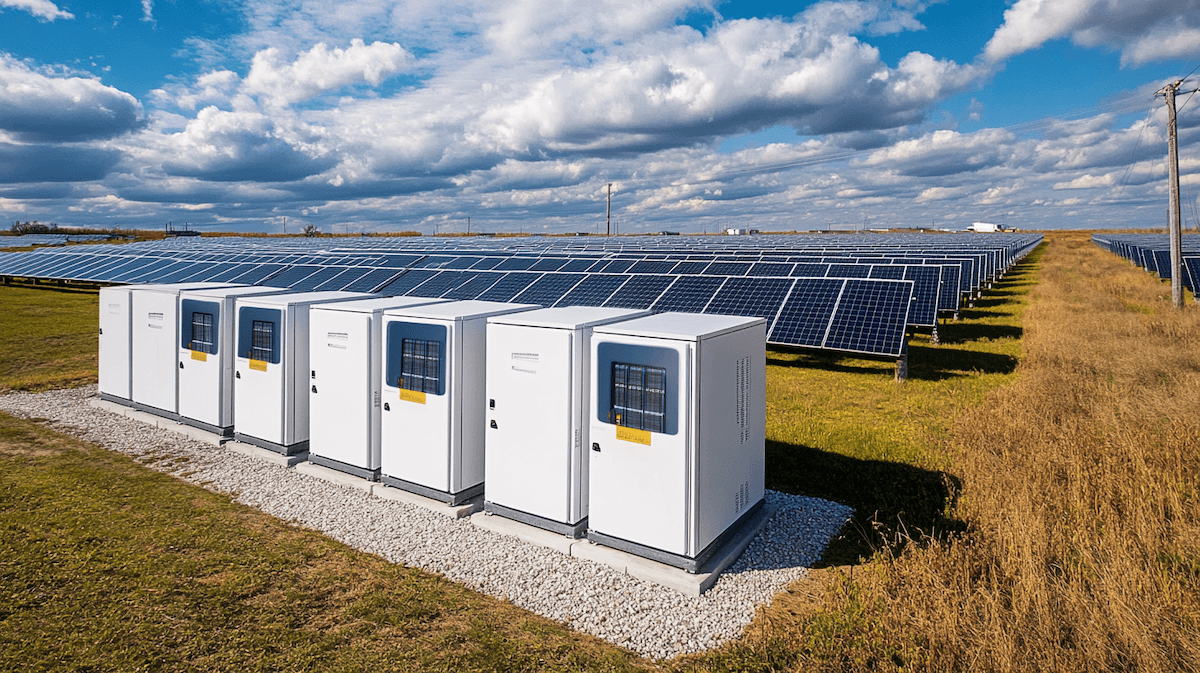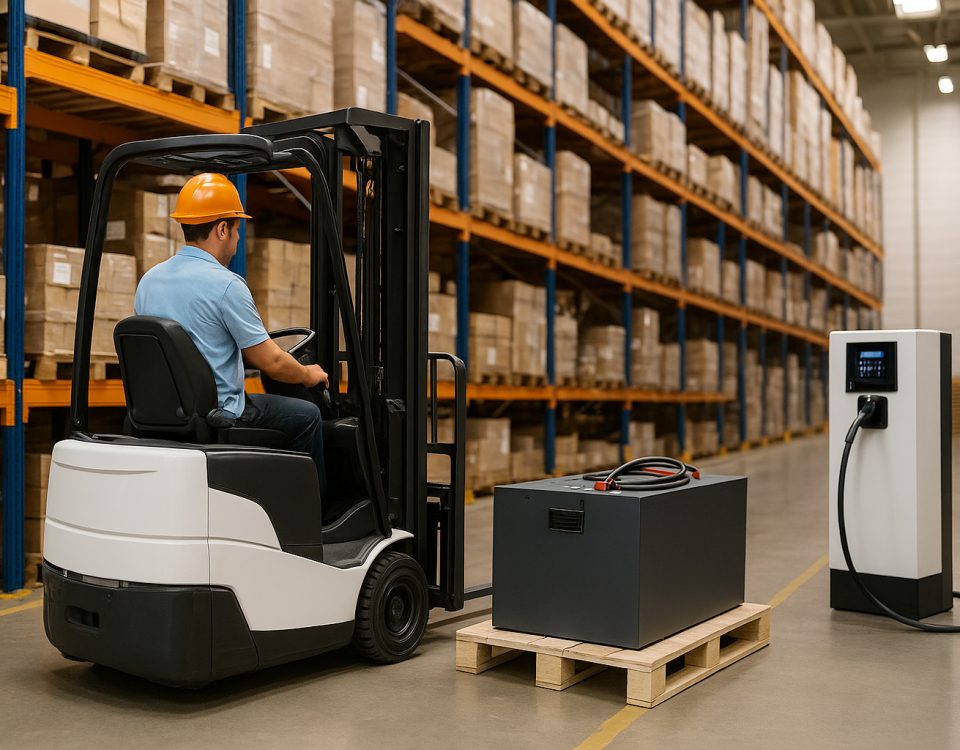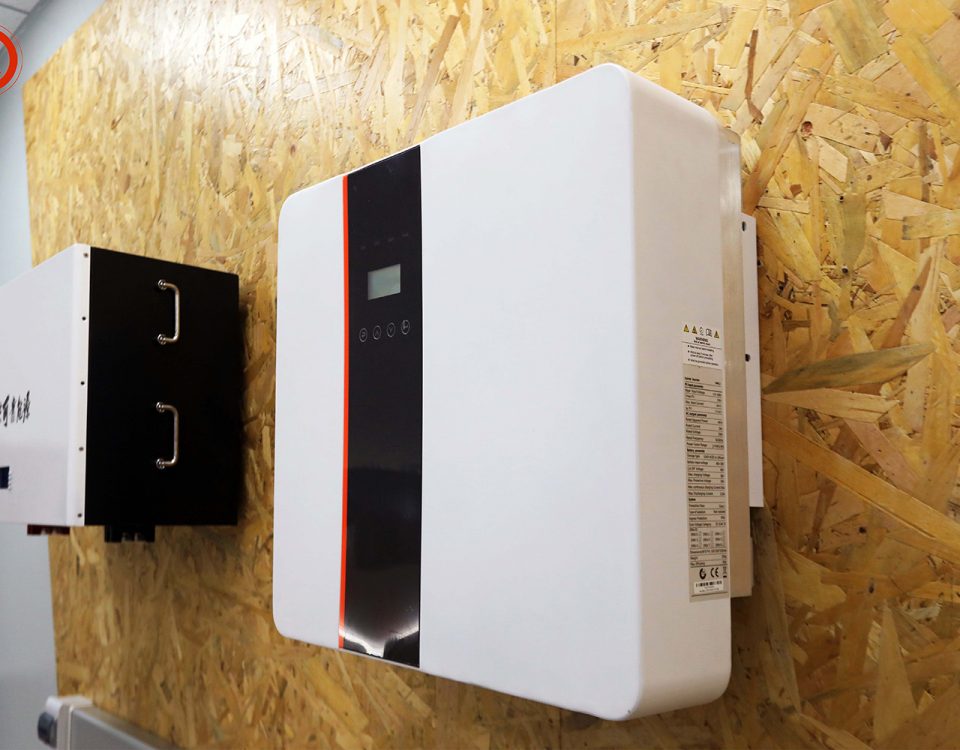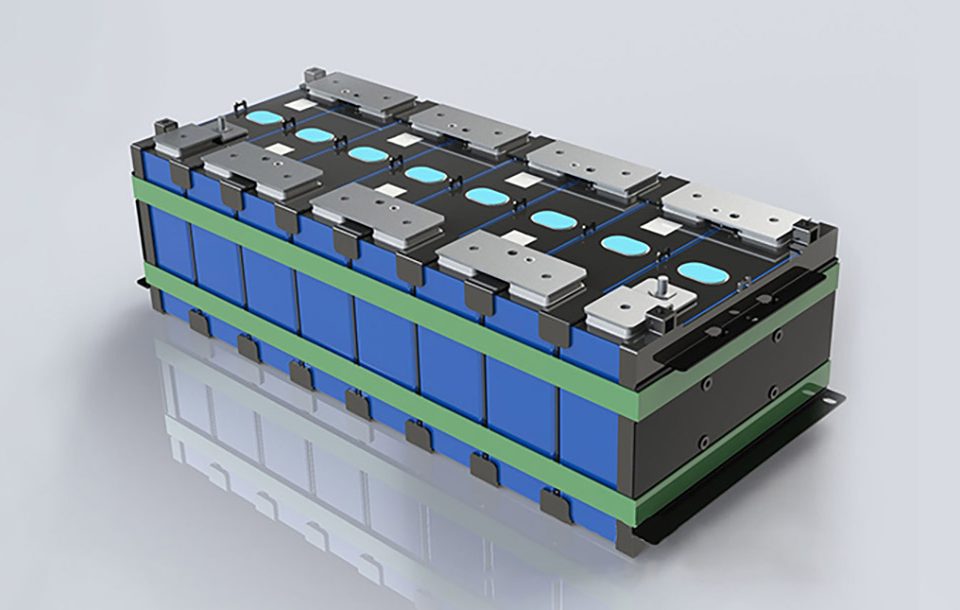บทนำ: เติมความมีชีวิตชีวาให้โลกด้วยนวัตกรรมระบบกักเก็บพลังงาน
เมื่อแหล่งพลังงานหมุนเวียน เช่น พลังงานแสงอาทิตย์และพลังงานลม กลายเป็นที่แพร่หลายมากขึ้น แบตเตอรี่สำหรับเก็บพลังงาน ได้กลายเป็นเครื่องมือที่สำคัญในการรักษาเสถียรภาพของระบบพลังงานและส่งเสริมอนาคตที่เป็นมิตรกับสิ่งแวดล้อมมากขึ้น การประยุกต์ใช้ครอบคลุมตั้งแต่ระบบในบ้านไปจนถึงโครงข่ายอุตสาหกรรม ช่วยแก้ไขปัญหาความไม่เสถียรของพลังงานและความต้องการสูงสุด อย่างไรก็ตาม เทคโนโลยีที่อยู่เบื้องหลังแบตเตอรี่เก็บพลังงานนั้นมากกว่าแผนสำรอง—มันคือรากฐานสำหรับการปฏิวัติพลังงานครั้งต่อไป
ในบทความนี้ เราจะเจาะลึกถึงแง่มุมทางเทคนิคของแบตเตอรี่สำหรับกักเก็บพลังงาน สำรวจศักยภาพในการเปลี่ยนแปลง และเน้นย้ำถึงวิธีที่นวัตกรรมยังคงปรับเปลี่ยนวงการนี้อย่างต่อเนื่อง ระหว่างทาง เราจะเน้นให้เห็นถึง ริชชี่, ชื่อที่เชื่อถือได้ในการผลิตแบตเตอรี่ลิเธียม, เป็นผู้นำในการขับเคลื่อนการก้าวหน้าของโซลูชันการเก็บกักพลังงาน.
1. บทบาทของแบตเตอรี่เก็บพลังงานในโลกที่ขับเคลื่อนด้วยพลังงานหมุนเวียน
แบตเตอรี่สำหรับเก็บพลังงานได้รับการออกแบบมาเพื่อ จับ, เก็บ, และปล่อยพลังงาน อย่างมีประสิทธิภาพ ทำให้สามารถจ่ายพลังงานได้อย่างสม่ำเสมอแม้ในกรณีที่แหล่งพลังงานหมุนเวียน เช่น แผงโซลาร์เซลล์หรือกังหันลม ไม่ได้ผลิตกระแสไฟฟ้า ความสามารถนี้มีความสำคัญอย่างยิ่งสำหรับ:
- การบาลานซ์ระหว่างอุปสงค์และอุปทาน: การรับประกันความเสถียรของระบบไฟฟ้าในช่วงเวลาที่มีการใช้ไฟฟ้าสูงสุดหรือการเพิ่มขึ้นอย่างกะทันหันของความต้องการ
- การบูรณาการพลังงานหมุนเวียน: การเก็บพลังงานส่วนเกินที่ผลิตได้ในช่วงที่มีแสงแดดหรือลมแรง และปล่อยออกมาเมื่อการผลิตต่ำ
- อิสรภาพนอกระบบไฟฟ้า: เสริมพลังให้พื้นที่ห่างไกลหรือบ้านเรือนแต่ละหลังสามารถบรรลุความเป็นอิสระด้านพลังงานได้
ด้วยฟังก์ชันเหล่านี้ แบตเตอรี่สำหรับกักเก็บพลังงานกำลังเปลี่ยนแปลงระบบพลังงานทั่วโลกโดยการลดการพึ่งพาเชื้อเพลิงฟอสซิลและเพิ่มความน่าเชื่อถือของพลังงาน
2. เทคโนโลยีหลักที่ขับเคลื่อนแบตเตอรี่สำหรับการกักเก็บพลังงาน
แบตเตอรี่ลิเธียมไอออน: มาตรฐานทองคำ
แบตเตอรี่ลิเธียมไอออนครองตลาดการเก็บกักพลังงานเนื่องจากความหนาแน่นของพลังงานสูง, ประสิทธิภาพ, และอายุการใช้งานยาวนาน. ประเภทย่อยเช่น ลิเธียมไอรอนฟอสเฟต (LFP) มอบประโยชน์เพิ่มเติม รวมถึงความปลอดภัยและความเสถียรทางความร้อนที่ดีขึ้น ทำให้เหมาะสำหรับการใช้งานทั้งในที่พักอาศัยและอุตสาหกรรม
ข้อดี:
- ประสิทธิภาพการเดินรอบสูง (90% หรือมากกว่า)
- ขนาดกะทัดรัดและสามารถปรับขนาดได้สำหรับการใช้งานที่หลากหลาย
- อายุการใช้งานยาวนาน ช่วยลดค่าใช้จ่ายในการบำรุงรักษาในระยะยาว
แบตเตอรี่แบบไหล: ความทนทานในระยะยาว
แบตเตอรี่แบบไหล, เช่น แบตเตอรี่รีดอกซ์แบบไหลวานาเดียม (VRFBs), เก็บพลังงานไว้ในอิเล็กโทรไลต์เหลว ทำให้เหมาะสำหรับระบบเก็บพลังงานขนาดใหญ่
ข้อดี:
- การปรับขนาดกำลังและกำลังการผลิตอย่างอิสระ
- อายุการใช้งานที่ยาวนานขึ้นพร้อมการเสื่อมสภาพน้อยที่สุด
- เหมาะอย่างยิ่งสำหรับการใช้งานที่ต้องการเก็บพลังงานในระยะยาว
แบตเตอรี่โซลิดสเตต: พรมแดนใหม่แห่งอนาคต
แบตเตอรี่แบบโซลิดสเตตแทนที่อิเล็กโทรไลต์เหลวด้วยวัสดุแข็ง มอบความปลอดภัยที่สูงขึ้น ความหนาแน่นของพลังงานที่สูงขึ้น และการชาร์จที่รวดเร็วขึ้น แม้ว่าจะยังอยู่ในระหว่างการพัฒนาสำหรับการนำไปใช้ในวงกว้าง แต่พวกมันคืออนาคตของนวัตกรรมแบตเตอรี่
ข้อดี:
- ความปลอดภัยที่ดีขึ้นพร้อมความเสี่ยงของการเกิดการลุกลามของความร้อนที่ลดลง
- ความหนาแน่นของพลังงานที่สูงขึ้น ช่วยให้ระบบมีขนาดเล็กลงและน้ำหนักเบาลง
- มีศักยภาพที่น่าสนใจสำหรับการใช้งานในระบบกริดและการจัดเก็บพลังงานหมุนเวียน
3. ตัวชี้วัดประสิทธิภาพทางเทคนิค: สิ่งที่สำคัญที่สุด
การเข้าใจพารามิเตอร์ทางเทคนิคของแบตเตอรี่เก็บพลังงานช่วยให้เราสามารถประเมินศักยภาพและข้อจำกัดของมันได้. ตัวชี้วัดหลักได้แก่:
- ความหนาแน่นของพลังงาน: แสดงถึงปริมาณพลังงานที่แบตเตอรี่สามารถเก็บได้เมื่อเทียบกับขนาดของมัน ซึ่งมีความสำคัญอย่างยิ่งสำหรับการติดตั้งที่มีพื้นที่จำกัด
- วงจรชีวิต: จำนวนรอบการชาร์จ-คายประจุที่แบตเตอรี่สามารถทนได้ก่อนที่ประสิทธิภาพจะลดลง
- ประสิทธิภาพการเดินทางไปกลับ: อัตราส่วนระหว่างพลังงานที่ส่งออกต่อพลังงานที่นำเข้า สะท้อนให้เห็นถึงประสิทธิภาพในการเก็บสะสมและปลดปล่อยพลังงานของแบตเตอรี่
- ระดับความลึกของการคายประจุ (DoD): เปอร์เซ็นต์ของกำลังไฟฟ้าที่สามารถใช้ได้จากแบตเตอรีโดยไม่ทำให้ระยะเวลาการใช้งานของมันลดลง
ตัวชี้วัดเหล่านี้ช่วยแนะนำผู้ใช้ในการเลือกแบตเตอรี่ที่เหมาะสมสำหรับการใช้งานเฉพาะ โดยคำนึงถึงต้นทุน ประสิทธิภาพ และอายุการใช้งาน
4. นวัตกรรมที่กำลังเปลี่ยนแปลงแบตเตอรี่สำหรับการกักเก็บพลังงาน
เมื่อภาคพลังงานมีการพัฒนา เทคโนโลยีการเก็บกักพลังงานก็มีการพัฒนาตามไปด้วย นวัตกรรมที่น่าสนใจ ได้แก่:
1. การผสานปัญญาประดิษฐ์ (AI)
ระบบจัดการแบตเตอรี่ (BMS) ที่ขับเคลื่อนด้วย AI ช่วยเพิ่มประสิทธิภาพการทำงานโดยการวิเคราะห์รูปแบบการใช้งาน ทำนายความต้องการในการบำรุงรักษา และป้องกันการชาร์จเกินหรือความร้อนสูงเกินไป
2. การประยุกต์ใช้ในรอบอายุที่สอง
การนำแบตเตอรี่รถยนต์ไฟฟ้าที่ใช้แล้วกลับมาใช้ใหม่สำหรับการเก็บกักพลังงานแบบอยู่กับที่ ช่วยยืดอายุการใช้งานของแบตเตอรี่ และลดปริมาณขยะ พร้อมทั้งสนับสนุนเศรษฐกิจหมุนเวียน
3. เทคนิคการรีไซเคิลขั้นสูง
วิธีการรีไซเคิลใหม่มีเป้าหมายในการกู้คืนวัสดุที่มีค่า เช่น ลิเธียม โคบอลต์ และนิกเกิล ได้ถึง 95% ซึ่งช่วยลดผลกระทบต่อสิ่งแวดล้อมและลดต้นทุนวัตถุดิบ
4. ระบบกักเก็บพลังงานแบบโมดูลาร์
โมดูลแบตเตอรี่แบบ Plug-and-play ช่วยให้สามารถขยายขนาดได้ง่าย จึงเป็นที่น่าสนใจสำหรับทั้งเจ้าของบ้านและผู้ใช้ในอุตสาหกรรมที่ต้องการโซลูชันพลังงานที่ยืดหยุ่น
5. การประยุกต์ใช้จริงของแบตเตอรี่เก็บพลังงาน
การกักเก็บพลังงานในที่อยู่อาศัย
ระบบแบตเตอรี่สำหรับบ้าน เช่น Tesla Powerwall หรือ LG Chem's RESU เก็บพลังงานแสงอาทิตย์ไว้ใช้ในช่วงเย็น ช่วยลดค่าไฟฟ้าและให้พลังงานสำรองในกรณีที่ไฟฟ้าดับ
การใช้เพื่อการพาณิชย์และอุตสาหกรรม
ธุรกิจใช้ แบตเตอรี่สำหรับเก็บพลังงาน เพื่อจัดการค่าบริการช่วงความต้องการสูงสุด, เพิ่มความมั่นคงทางพลังงาน, และรักษาการดำเนินงานที่สำคัญในระหว่างการหยุดชะงักของระบบไฟฟ้า
ระบบกักเก็บพลังงานขนาดใหญ่
การติดตั้งแบตเตอรี่ขนาดใหญ่ เช่น Hornsdale Power Reserve ของ Tesla ในออสเตรเลีย ช่วยรักษาเสถียรภาพของโครงข่ายไฟฟ้าโดยการปรับสมดุลระหว่างอุปทานและอุปสงค์ ผสานพลังงานหมุนเวียน และจัดเตรียมสำรองฉุกเฉิน
โครงสร้างพื้นฐานสำหรับสถานีชาร์จรถยนต์ไฟฟ้า
แบตเตอรี่สำหรับกักเก็บพลังงานช่วยให้สถานีชาร์จรถยนต์ไฟฟ้าสามารถชาร์จได้อย่างรวดเร็วโดยการรองรับความต้องการของระบบไฟฟ้าและรับประกันความเสถียรของพลังงานอย่างต่อเนื่อง
6. ทำไมถึงเลือก RICHYE สำหรับโซลูชันการกักเก็บพลังงาน?
ในภูมิทัศน์การแข่งขันของการผลิตแบตเตอรี่ ริชชี่ โดดเด่นในฐานะผู้นำในการนำเสนอโซลูชันแบตเตอรี่ลิเธียมคุณภาพสูง เชื่อถือได้ และนวัตกรรมใหม่. เป็นที่รู้จักจาก ประสิทธิภาพที่โดดเด่น ความปลอดภัย และความคุ้มค่าแบตเตอรี่เก็บพลังงานของ RICHYE ได้รับความไว้วางใจจากทั้งธุรกิจและเจ้าของบ้าน
ด้วยความมุ่งมั่นด้านความยั่งยืนและเทคโนโลยีขั้นสูง แบตเตอรี่ของ RICHYE โดดเด่นในการสนับสนุนระบบพลังงานหมุนเวียน ความเสถียรของโครงข่ายไฟฟ้า และการใช้งานแบบอิสระจากโครงข่าย ความเชี่ยวชาญและแนวทางที่มุ่งเน้นลูกค้าเป็นศูนย์กลางทำให้พวกเขาเป็นพันธมิตรที่เชื่อถือได้สำหรับความต้องการในการกักเก็บพลังงาน
7. ความท้าทายและโอกาสในอนาคต
ในขณะที่แบตเตอรี่สำหรับกักเก็บพลังงานได้พัฒนาไปอย่างมากแล้ว แต่ยังคงมีความท้าทาย เช่น ต้นทุน ความพร้อมของทรัพยากร และการรีไซเคิล การแก้ไขอุปสรรคเหล่านี้จะต้องอาศัย:
- การสนับสนุนนโยบาย: แรงจูงใจในการนำระบบกักเก็บพลังงานแบตเตอรี่มาใช้และการจัดสรรเงินทุนสำหรับโครงสร้างพื้นฐานการรีไซเคิล
- การวิจัยและพัฒนา: การลงทุนอย่างต่อเนื่องในเทคโนโลยีรุ่นถัดไป เช่น แบตเตอรี่แบบโซลิดสเตตและแบตเตอรี่แบบไหล
- ความร่วมมือระดับโลก: การแบ่งปันแนวทางปฏิบัติที่ดีที่สุดและการขยายโซลูชันที่ยั่งยืนไปยังตลาดต่างๆ
แม้จะมีความท้าทายเหล่านี้ อนาคตยังคงสดใส ด้วยการก้าวหน้าในด้านวัสดุ การผลิต และการผสานระบบ แบตเตอรี่สำหรับเก็บพลังงานกำลังจะเข้ามามีบทบาทสำคัญยิ่งขึ้นในการบรรลุเป้าหมายด้านพลังงานของโลก
บทสรุป: การขับเคลื่อนอนาคตด้วยแบตเตอรี่กักเก็บพลังงาน
แบตเตอรี่สำหรับกักเก็บพลังงานเป็นมากกว่าการเสริมสร้างพลังงานหมุนเวียน—พวกมันเป็นรากฐานของระบบนิเวศพลังงานที่ยืดหยุ่นและยั่งยืน ตั้งแต่การค้นพบทางเทคนิคไปจนถึงการใช้งานจริง แบตเตอรี่เหล่านี้กำลังเปลี่ยนแปลงวิธีการผลิต เก็บรักษา และใช้พลังงานของเรา
ด้วยนักนวัตกรรมที่เชื่อถือได้เช่น ริชชี่ ขับเคลื่อนอุตสาหกรรมไปข้างหน้า แบตเตอรี่เก็บพลังงานช่วยให้เราสร้างอนาคตที่สะอาดขึ้น เขียวขึ้น และฉลาดขึ้นได้. เมื่อเทคโนโลยีก้าวหน้า บทบาทของพวกเขาก็จะเพิ่มขึ้นเท่านั้น มอบพลังให้บุคคลและธุรกิจสามารถยอมรับพลังงานหมุนเวียนได้ด้วยความมั่นใจ.
คำสุดท้าย:
ด้วยการเข้าใจถึงความละเอียดอ่อนของเทคโนโลยีการเก็บกักพลังงาน เราสามารถประเมินคุณค่าของมันได้ดีขึ้น และตัดสินใจอย่างมีข้อมูลเพื่อโลกที่ยั่งยืนมากขึ้น ไม่ว่าคุณจะกำลังพิจารณาถึงระบบสำหรับบ้านอยู่อาศัยหรือโซลูชันขนาดใหญ่สำหรับระบบไฟฟ้า การเก็บกักพลังงานด้วยแบตเตอรีคือแสงสว่างที่นำทางเราไปข้างหน้า




